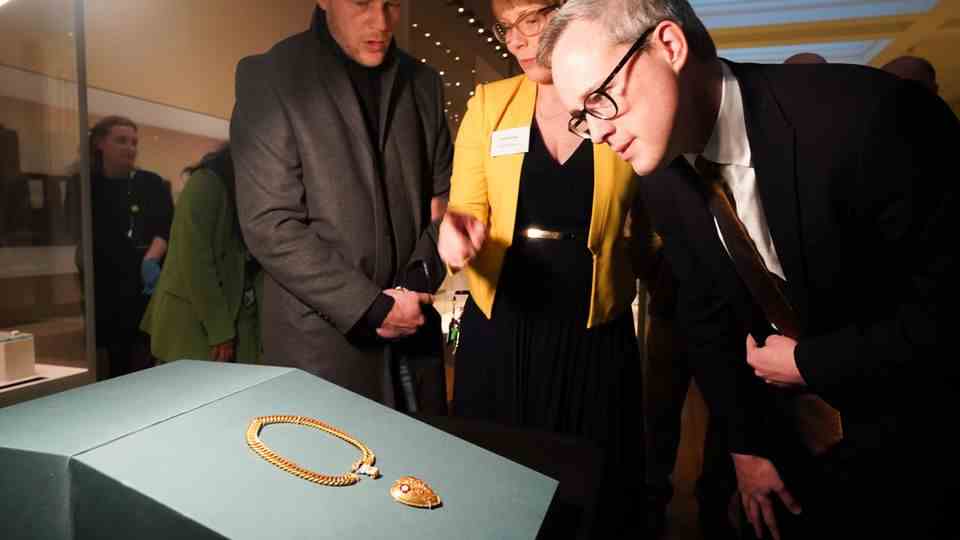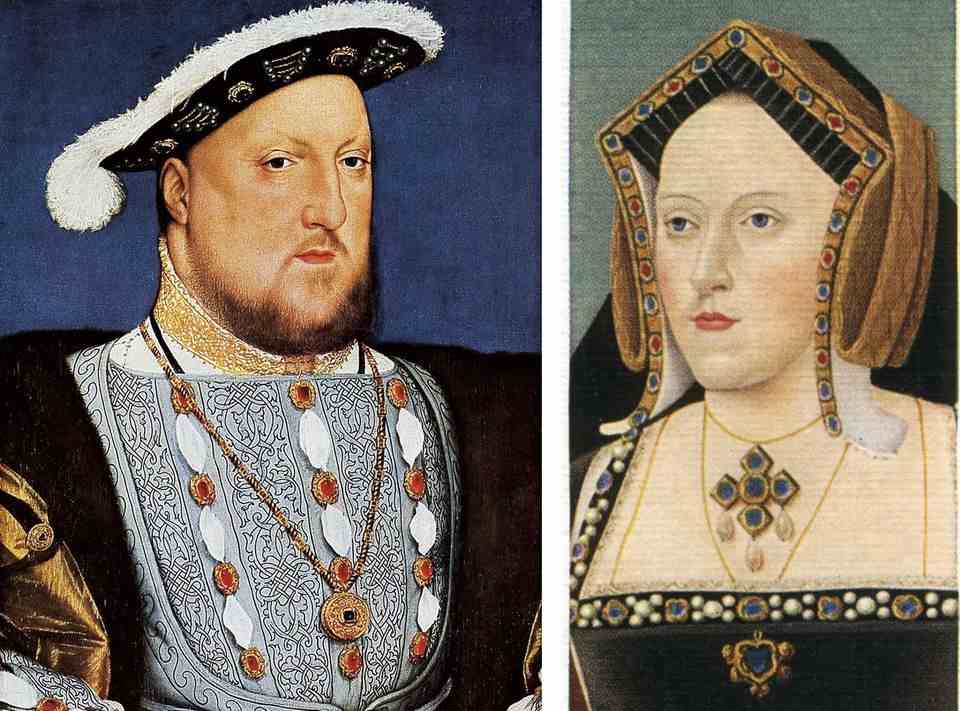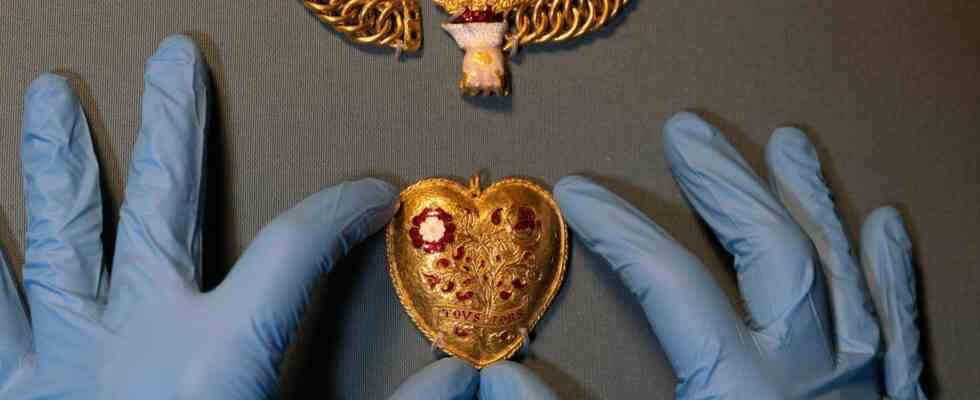Henry VIII and Catherine of Aragon
This chain was probably buried in the soil of central England for centuries – now a four-year-old is said to benefit from it
The chain and pendant are from the 16th century and probably belonged to Henry VIII.
© Dan Kitwood / Getty Images
It probably comes from Henry VIII and is almost 500 years old. A piece of jewelry discovered in a field in England in 2019 made headlines on the island. A four-year-old should now benefit from the fund.
Henry VIII – so much has been handed down – loved life, at least his own, and above all women, at least at times. The former King of England (1509 to 1547) from the House of Tudor had six marriages, two were annulled, two women presumably died naturally, and the ruler had two executed.
The monarch’s turbulent and cruel love life is making British headlines again now, 476 years after his death – and a little English boy will benefit from it. Thanks to Charlie Clarke, a 34-year-old restaurateur from Birmingham.
Restaurateur Charlie Clarke makes a spectacular discovery
In 2019, according to British newspapers, Clarke was out and about with a metal detector in the county of Warwickshire in central England, he had only discovered the hobby for himself a month earlier. Once again he was unsuccessful, only discovered “garbage”, as he says according to the “Financial Times”. car batteries, scrap metal. “To be honest, I’ve had enough of digging,” Clarke said – until his detector went off again. And Clarke started digging. Around 30 centimeters deep.
Steitwagen find
With jewelry and a chariot – that’s how a couple went into eternity
Then he screamed, “like a little schoolgirl, my voice got pretty high,” the hobby treasure hunter reports to the Guardian. He had discovered a gold chain with 75 links and a heart-shaped pendant. You make a find like this “once in 30 years,” says Clarke. But he didn’t know if the piece of jewelry was really worth anything, after all, all that glitters isn’t gold. Clarke needed professionals.
Necklace probably owned by Henry VIII.
He found it in the British Museum. But they didn’t give the finder much hope. “We have here the largest collection of precious metal objects from the early Tudor period. None of them look like it – they tend to be smaller. Things like this have not really survived,” says Rachel King, curator of European Renaissance at the British Museum. There was even a suspicion that the chain was a fake, reports the research journal Smithsonian Magazine.

Finder Charlie Clarke (left) looks at the chain in London’s British Museum
© James Manning / PA Wire / Picture Alliance
To be on the safe side, the chain was checked again by other experts. Gold content, tool marks from the maker, processing technique and components only allow one conclusion: The chain is genuine and from the 16th century, made around 1520, possibly on the occasion of a magnificent summit meeting between Henry VIII and Francis I, King of France she also a prize at a jousting tournament.
Clarke’s son is said to benefit
The chain was later intended to prove Henry VIII’s intermittent love for his first wife, Catherine of Aragon. An “H” and a “K” are engraved on the pendant, along with a play on words from the French “toujours” and the English “all yours”. The piece of jewelery is decorated with a Tudor rose, among other things. However, the scientists cannot prove the possible connection. And how did the chain get into Warwickshire soil? “We don’t know,” says museum curator Ricarda King.

Henry VIII and Catherine of Aragon in contemporary drawings. The two nobles married in 1509. Several of the couple’s children were stillborn or died shortly after birth before their daughter Mary, later Queen Mary I, was born in 1516. Since the two had no male offspring, Heinrich, who was already having an affair with Anne Boleyn, wanted to have the marriage dissolved. Pope Clement VII refused. Only in 1533 did the English clergy give in. The marriage was declared invalid. Catherine of Aragon had to leave the court and died of cancer three years later.
© Picture Alliance
One thing is certain: the restaurateur from Birmingham has made a sensational discovery. Nothing of this Renaissance grandeur and importance has not been found in Britain for more than two decades, King reports. “The quality is such that the necklace was either commissioned by, or somehow associated with, a member of the higher nobility or courtier.”
The find is now on display in the British Museum and once its value has been appraised, Charlie Clarke and the owner of the site property in Warwickshire are to each get a half share. The 34-year-old wants to use the money to give his four-year-old son “the best possible education”. “That’s all it’s really about.” At the moment, however, his offspring has other plans for their professional future, says his father. Clarke Junior only wants to be one thing later: treasure hunters.
Sources: “The Guardians”, “Financial Times”, “Smithsonian Magazine”, BBC


